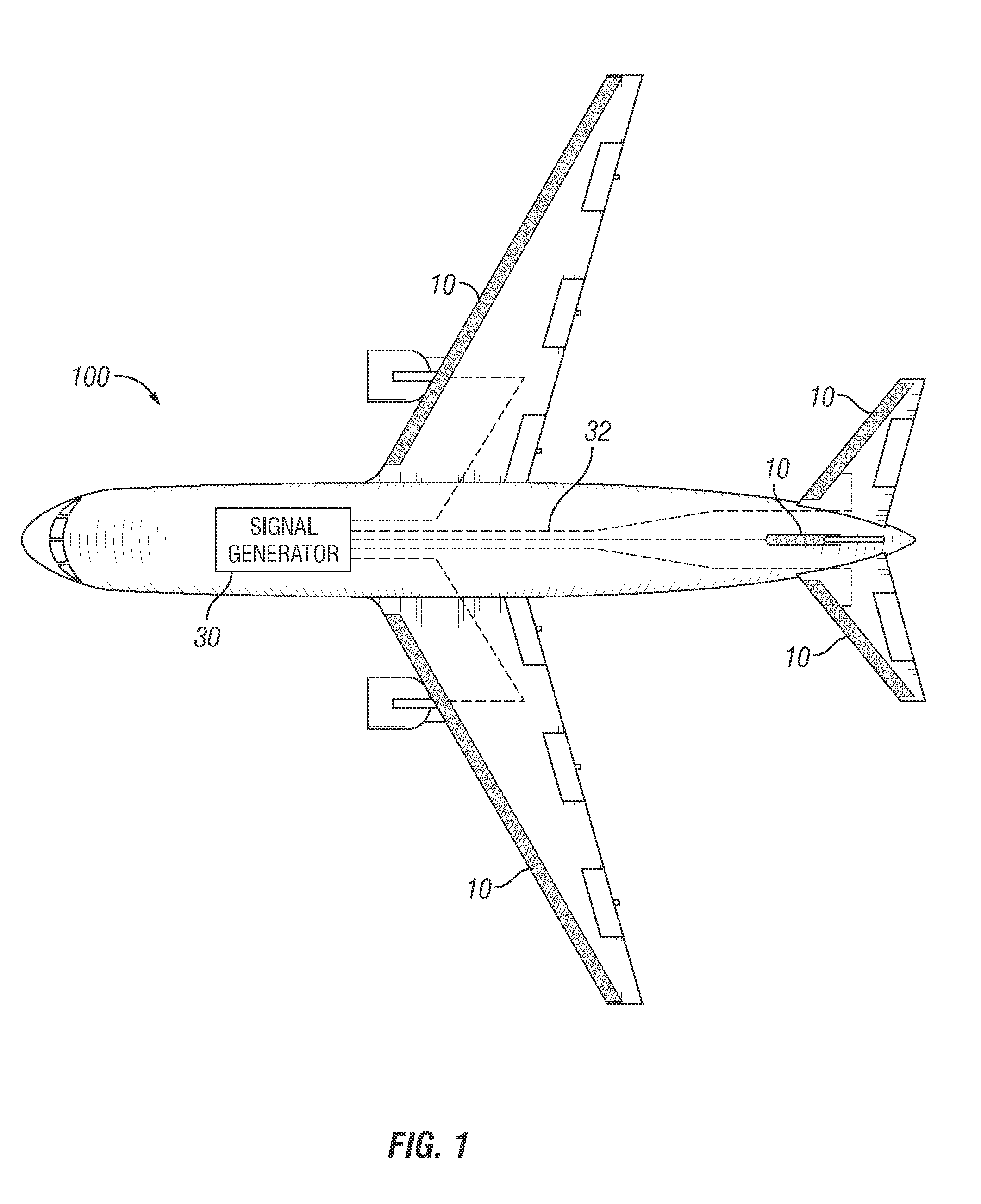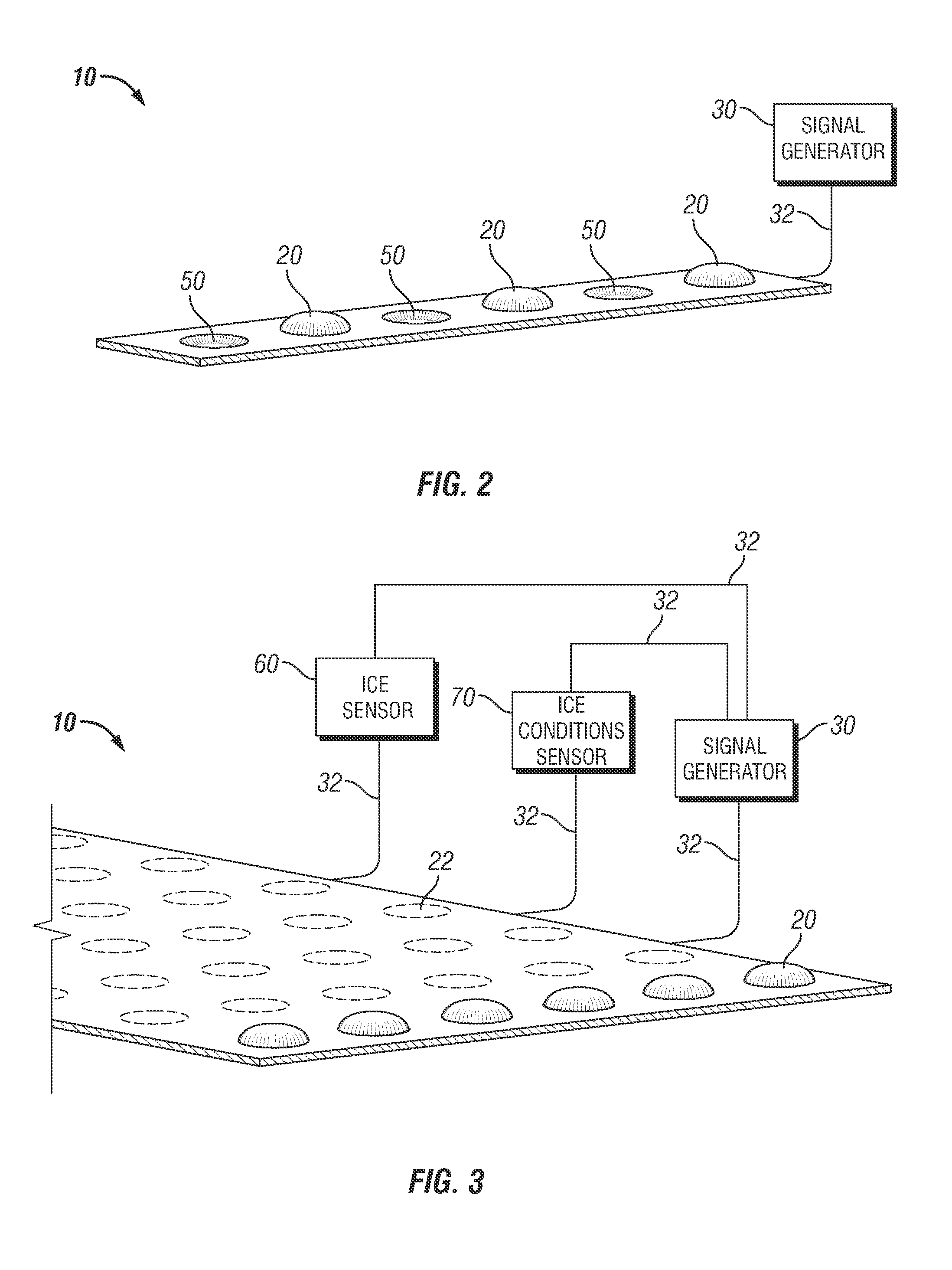Ice protection for aircraft using electroactive polymer surfaces
- Summary
- Abstract
- Description
- Claims
- Application Information
AI Technical Summary
Benefits of technology
Problems solved by technology
Method used
Image
Examples
Embodiment Construction
[0022]The present application involves the use of electro-active polymers (EAPs), which are a category of materials that are well-known in the art. The EAP surface comprises a compliant capacitor that includes an elastomer dielectric film sandwiched between two compliant electrodes. In operation, an electric field is applied to the compliant electrodes creating an electrostatic pressure, also referred to as Maxwell Stress, compressing the elastomer film. The compression of the elastomer film results in an elongation of the elastomer film because of incompressibility of the elastomer film. An application of an electric field between two oppositely charged electrodes causes a mechanical compression between the two electrodes. Likewise, an application of an electric field between two like charged electrodes causes a mechanical expansion between the two electrodes.
[0023]The EAP surface may be adapted to create a dimple or depression actuator in the elastomer film upon an application of ...
PUM
 Login to View More
Login to View More Abstract
Description
Claims
Application Information
 Login to View More
Login to View More - R&D
- Intellectual Property
- Life Sciences
- Materials
- Tech Scout
- Unparalleled Data Quality
- Higher Quality Content
- 60% Fewer Hallucinations
Browse by: Latest US Patents, China's latest patents, Technical Efficacy Thesaurus, Application Domain, Technology Topic, Popular Technical Reports.
© 2025 PatSnap. All rights reserved.Legal|Privacy policy|Modern Slavery Act Transparency Statement|Sitemap|About US| Contact US: help@patsnap.com



